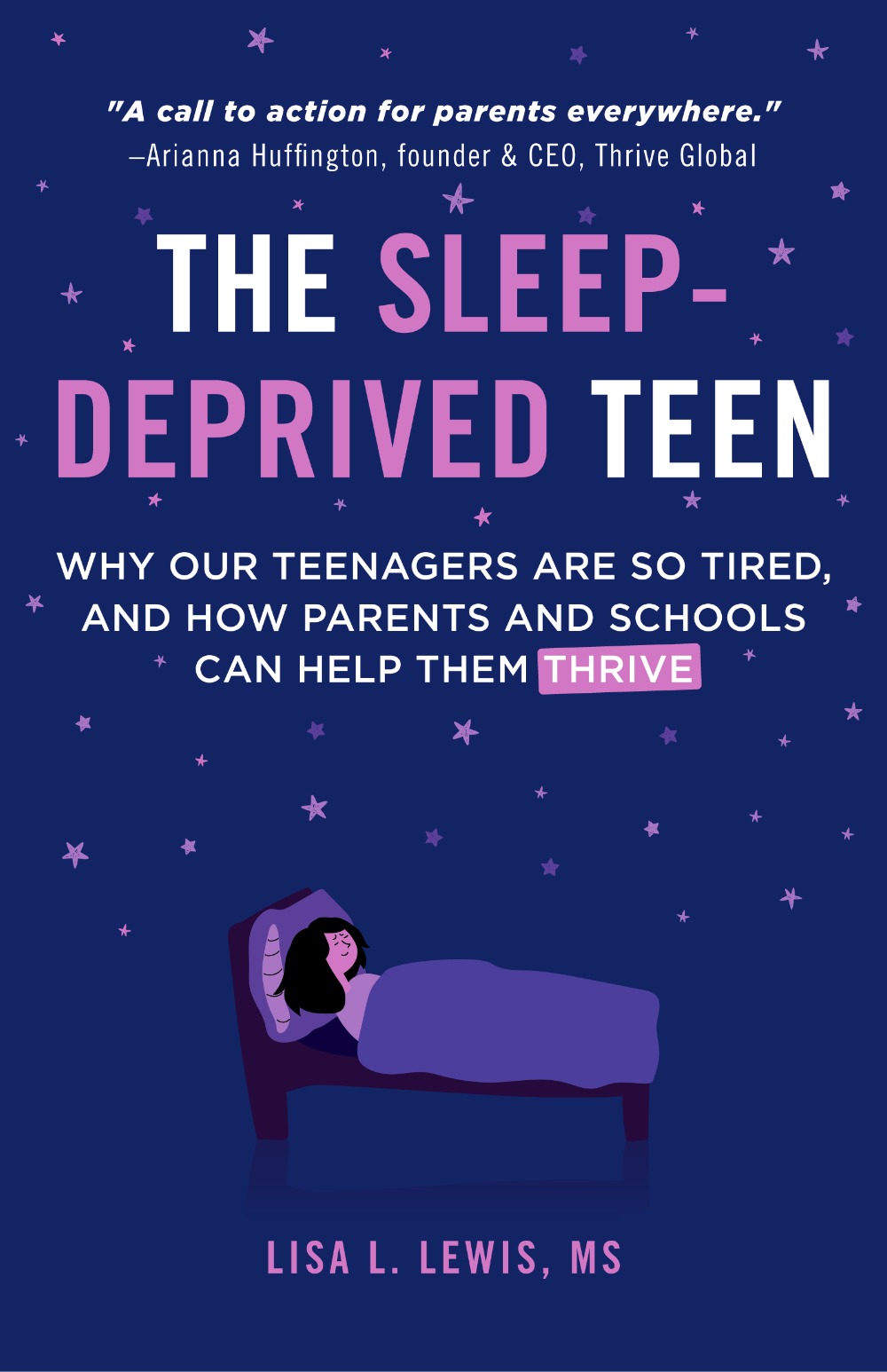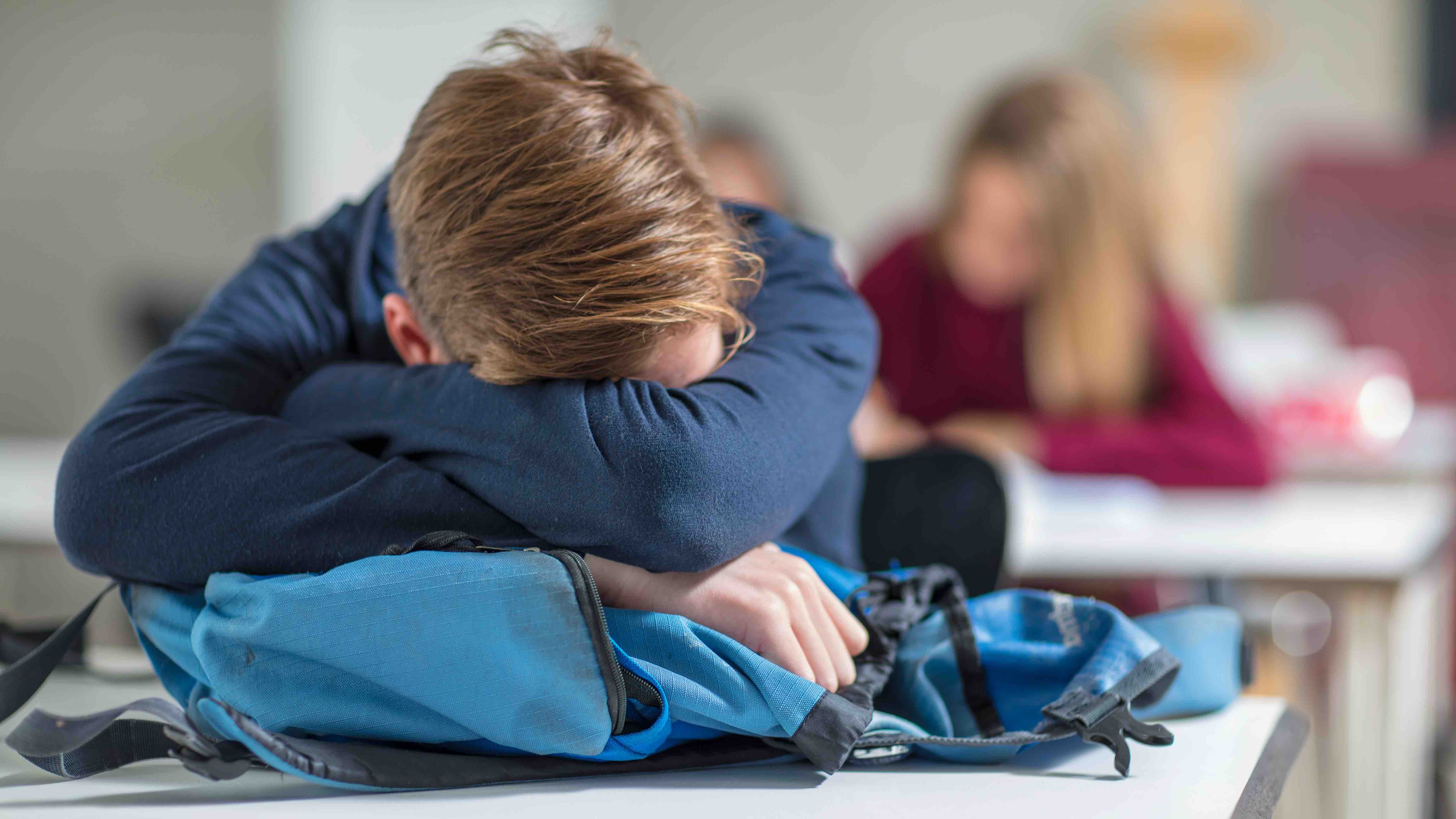To any observers, the electrodes were the most visible sign that the Stanford Summer Sleep Camp was a bit out of the ordinary.
Joe Oliveira, one of the original campers, recalls that right after check-in, four electrodes were glued to his hair, two taped next to his eyes, and several more by his chin. The electrodes remained in place the whole time. Long cords came out of them that were, “very small, like an iPhone charger,” he told me. During the day, the cords were often tied back and taped together into a compact bundle at the back of his head.
The “trodes” (as the campers were called because of their electrode ponytails) attracted their fair share of weird looks on their outings around the university campus. And there was something else peculiar: Like clockwork, every two hours, they all returned to the dorm for “nap tests,” according to Mary Carskadon, who was pursuing her doctorate in neuro- and biobehavioral sciences at Stanford University.

The accompanying article is excerpted and adapted from “The Sleep-Deprived Teen: Why Our Teenagers Are So Tired, And How Parents And Schools Can Help Them Thrive,” by Lisa L. Lewis (Mango Publishing, 280 pages).
Visual: Mango
In their darkened dorm rooms, all the campers — a mix of kids and teens — would lie quietly for 20 minutes and attempt to fall asleep. Meanwhile, technicians in a nearby control room monitored their brainwaves, eye movements, and chin-muscle activity being transmitted from their electrodes via the cords, which had been plugged into a box near the headboard that had cables linked to a polysomnograph machine in the other room. There, a continuous paper trail issued forth mapping the campers’ data.
When the time was up, the campers were roused and unplugged. The counselors recorded their vital signs, then plugged their wires into a second box closer to the dorm room desk and ran the campers through a short series of tests to measure their recall, attention span, and other aspects of alertness and cognitive functioning. Tom Harvey, who worked as a counselor/technician at the camp for several years, recalled a mix of “math tests and memory tests and ‘can you suffer through boredom’ tests.”
Oliveira remembered the tests more fondly. An example of a typical memory test was being asked to listen to a story about, say, a gorilla, he explained, where “gorilla” and “because” are the key words: “If you hear the word ‘gorilla’ you tap the left switch and when you hear the word ‘because’ you tap the right switch,” he said. “They want you to tap it as closely as possible to when you heard the word.” Then the campers would be unplugged from the machines, their electrodes tied back into ponytails until it was time for the next nap.
Oliveira wasn’t just a camper, of course. And the Stanford Summer Sleep Camp wasn’t really a camp, even though it was designed to resemble one. The campers were paid study subjects for a long-term adolescent study. Each camper was paired with a counselor, in nearly all cases a Stanford undergrad working under the supervision of Carskadon.
What she found over the course of the camp’s existence from 1976 through 1985 profoundly changed our understanding of teen sleep.
Carskadon had arrived at Stanford a few years prior to work with William Dement, who in 1970 had founded the nation’s first clinic dedicated to sleep disorders.
In 1975, after reviewing the results of several sleep experiments, she and Dement realized the amount of time it had taken their subjects to fall asleep was directly related to how sleepy they were. This meant that measuring the amount of time it took them to fall asleep was a way to measure their level of sleepiness.
Based on this realization, they created the Multiple Sleep Latency Test, or MSLT, to measure sleep latency (how long it takes to fall asleep). They decided the test should be repeated every two hours. To minimize boredom (and, presumably, keep people coming back), they decided to cap the amount of time the subjects needed to lie in bed at 20 minutes.
When the clinic received a grant to study sleep in children and teens, an opportunity presented itself for them to deploy the new MSLT measure more broadly. Their goal: to determine how sleep changed over the course of adolescence, based on the common assumption kids needed less sleep as they matured.
Because Dement’s on-campus lab was too small for a study of the scope they envisioned, they selected a dorm and began to prepare.
Using Dement’s pickup truck, Carskadon’s crew of assistants drove all over campus fetching the necessary equipment. The sleep disorders clinic needed its polysomnograph machine year-round, but there was one in the animal lab that wasn’t used in the summer, and several others tucked away at other labs on campus. After they’d piled them all in the bed of the pick-up truck for transport, the assistants would help lug them into the building.
While the machines were being installed in the control room, several rooms in the same dorm wing were being readied for the campers. First, the windows had to be completely covered to keep any light from seeping in during the many naps. Each window had to be meticulously covered with cardboard, which was then duct-taped to the frames. (After a few years, the crew switched to contact paper.) Then came the task of hooking up all of the equipment, with cables snaking from the bedside and deskside consoles out the door to the control room.
There was another challenge: After being plugged in to the bedside consoles, the campers were effectively tethered to their beds. In the absence of video monitors, intercoms, or other now-standard monitoring devices, one of Carskadon’s technicians designed and built a call-button system. “For the camper, in the middle of the night, if they needed to get up to use the toilet or something, they would push a button and it would flash a light and ring a little tone in the room where the equipment was,” Carskadon explained. A staff member would then go check on the camper.
From the start, Carskadon knew the studies needed to be balanced with fun activities so campers would enjoy themselves and, most important, would keep coming back. That meant volleyball games and afternoon strolls to Stanford’s then-operating bowling alley in the student union center.
Being out in the sun and getting sweaty meant the electrodes had to be checked regularly to ensure they hadn’t come loose — if so, the area would need to be rubbed clean with alcohol before the sensors were re-affixed.
Making the experience fun for the campers was a key part of the job. Carskadon, ever on the lookout for kids who seemed shy or unhappy, might ask the counselors to lavish a specific camper with a little more attention, Harvey recalled. Or if the kids’ energy was flagging, she might ask two counselors to stage a Jell-O-eating contest as lunchtime entertainment.
At scheduled intervals throughout the day, the counselors also had to remember to administer questionnaires assessing how tired the campers felt. “Screwing up put holes in the data,” Harvey said. They couldn’t go back and fill in data if they forgot, and it would create extra statistical work for Carskadon if people missed questionnaires.
Each day began with Carskadon counting down until the exact time for the counselors to enter the kids’ rooms to rouse them and record their temperature and pulse. After a quick series of tests and a questionnaire, it was time for breakfast, then back to the rooms for a morning nap period. Again, they’d be plugged in to the headboard monitors, while the technicians in the control room observed their brainwave patterns. If the kids fell asleep, the counselors would quickly re-appear to wake them. And if not, the campers would lie in the darkened room until the 20 minutes were up and the counselors reappeared to untether them.
Back then, scoring the records was all done by hand. The machines would make “little squiggly lines on a polygraph to record your brainwaves and record your muscle movement and record your eye movement,” Kim Harvey, one of Carskadon’s main assistants (and sister to Tom Harvey) told me. “You could then score it and say ‘this is REM sleep,’ ‘this is non-REM sleep,’ ‘this is awake,’ that type of thing.”
To test the hypothesis that kids needed less sleep as they matured, Carskadon needed the same kids to come back every year. This meant calling all of the campers ahead of time to ensure they were planning on attending, and even fetching them in person if necessary. The goal, Tom Harvey told me, was to ensure “no kid had a reason not to show up.”
The counselors also reminded the campers to stick to a regular sleep schedule the week leading up to camp. They were asked to sleep 10 hours a night, the same as they’d be doing at the camp, when they’d be put to bed at 10 p.m. and awakened at 8 a.m.
Tracking sleep changes as the kids matured meant assessing each child’s physical development to see where they were on the puberty spectrum. Accordingly, the camp check-in process included a brief medical exam in which fellows in Stanford’s adolescent medicine program evaluated the kids using the widely accepted Tanner scale (commonly used in yearly well-child and well-adolescent pediatric check-ups). A child who didn’t yet show signs of puberty and was still in preadolescence was at Stage 1; those who showed advanced pubertal development were at Stage 5.
What Carskadon found, which contradicted what she’d expected, was that the kids didn’t need less sleep as they matured; across the board, all of the kids slept about 9 hours and 15 minutes at night.
The kids who didn’t yet show signs of puberty or were at the early stages would sometimes wake on their own before the counselors came in at 8 a.m. During the nap periods, they’d only rarely be able to fall asleep. And when they did, it took them close to 10 minutes.
For the kids in the middle or later stages of puberty, it was a different story. In the morning, many of them had to be roused at 8 a.m. And at naptimes, they fell asleep more often and much more quickly — sometimes in less than a minute. (And this was after having been in bed for 10 hours at night!)
The more mature adolescents seemed to have an evening burst of energy and seemed more alert during the evening nap periods. “Mary and I cautiously attributed the results to some sort of circadian rhythm effect,” Dement later wrote, “but we really didn’t understand them.”
Carskadon is now the director of chronobiology and sleep research at Bradley Hospital (part of the medical school at Brown University). She also heads the Sleep for Science Research Lab, where she established the next iteration of sleep camp and continued her groundbreaking research into adolescent sleep.
In one study, Carskadon surveyed several hundred sixth-graders in order to examine the circadian timing shift she and Dement had surmised. One set of questions allowed researchers to assess the students’ stage of physical maturity, while another revealed whether the students felt most alert in the morning or in the evening. The results were striking: Girls in the earlier stages of puberty generally kept earlier hours, while those who were further along in their pubertal development were far more likely to keep later hours. (The change in boys, whose pubertal development lagged behind the girls, was much slighter.)
Subsequent in-lab studies at Brown allowed Carskadon to test this more directly. By analyzing levels of melatonin, the hormone that encourages sleep, via saliva samples taken at regular intervals, she was able to show that adolescents indeed undergo a shift during the teen years: Compared to younger kids, their melatonin levels rise later at night and don’t subside until later in the morning.
As Carskadon discovered, this shift explains why teens aren’t able to fall asleep until later in the evening and why they tend to sleep in whenever possible.
But all of this knowledge came later. As Kim Harvey told me, recalling her time working at the Stanford Summer Sleep Camp, they’d known “hardly anything about sleep back then.”
Lisa L. Lewis is a journalist and the author of “The Sleep-Deprived Teen.” She lives in California.











